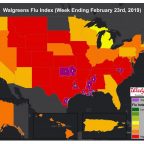New Book Reveals Nanoweapons More Problematic Than Nuclear Weapons
The first book in its genre, Nanoweapons: A Growing Threat to Humanity (Potomac Books, April 2017) by Louis A. Del Monte, reveals these nearly invisible weapons of mass destruction are more likely to be deployed in conflict than nuclear weapons. And unlike nuclear weapons, no treaties ban the development of nanoweapons or their deployment in conflict. Superpowers of the future will be those nations with the most destructive nanoweapons, not just nuclear weapons.
“Nanoweapons opens the cloak of secrecy on the developing area of nanotechnologies and how societies may use them in the future for good and evil,” said Tamara Bratland, engineer for a Fortune 500 medical device company.
The United States, China, and Russia are already locked in a new arms race to gain nanoweapons supremacy. Evidence suggests each major player is developing insect size drones, such as the United States Army’s recently announced “fly drone,” for surveillance and offensive missions. This gives a whole new meaning to the phrase “fly on the wall.” Millions of insect size drones, referred to as nanobots, are projected to become the new weapons of mass destruction. But controlling millions of nanobots is difficult; once released, they may go beyond an adversary’s boarders and kill indiscriminately.
In his insightful and prescient account of this risky and radical technology, Del Monte predicts that nanoweapons will dominate the battlefield of the future. Nanoweapons addresses the question: Will it be possible to develop, deploy, and use nanoweapons in warfare without rendering humanity extinct?
“This book can help preserve our future,” said Richard Spielberger, former Honeywell Engineer Fellow.
Louis A. Del Monte is an award-winning physicist, featured speaker, and the chief executive officer of Del Monte and Associates, Inc. During his thirty-year career as a physicist and business executive at IBM and Honeywell, he led the development of microelectronics and sensors and developed patents fundamental to the fabrication of integrated circuits. He is the author of The Artificial Intelligence Revolution: Will Artificial Intelligence Serve Us or Replace Us? and How to Time Travel: Explore the Science, Paradoxes, and Evidence.






